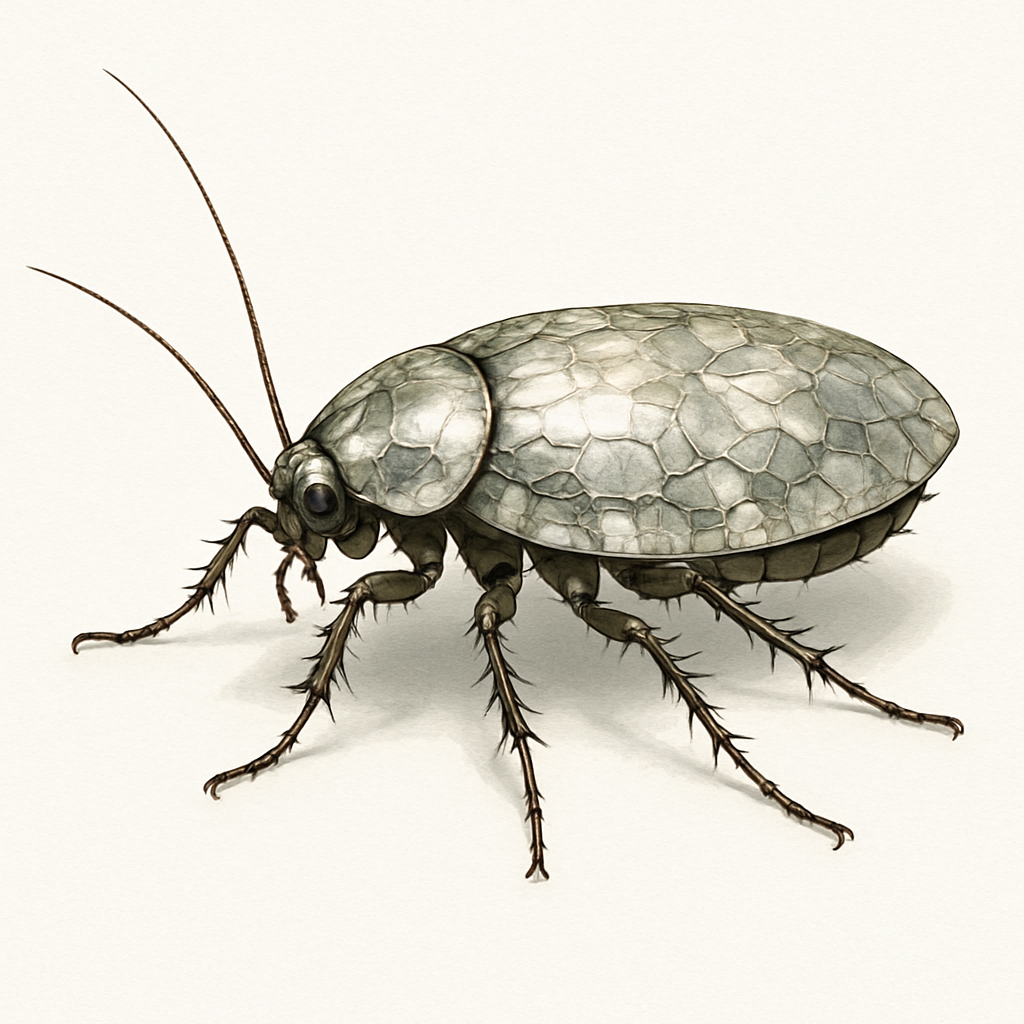Mirrored Roaches
Mirrored Roaches
Biological Profile
Scientific Name
Cryptogaster reflectiva
ClassificationAdaptive Scavenger
KingdomAnimalia
PhylumArthropoda
ClassInsecta
OrderBlattodea
FamilyCryptogastridae
HabitatCollapse zones, reactor cores, polymeric floodplains, sealed research vaults
RangeUbiquitous across derelict and post-industrial biomes of Thauzuno
Physical Characteristics
Length (avg.)
4.3–5.7 cm
Weight (indiv.)~12–16 g
Dermal AdaptationPhotonic reflective cells (bio-chromatophoric mirror layer)
ColorationEffectively invisible under ambient light; shimmer-effect in direct exposure
Distinguishing Featureseight-limbed with refractive shell, ultrathin sensory antennae, radiation-scarred ventral segments
Physiology & Systems
Respiration
Highly efficient tracheal system; tolerant of anoxic and chemically unstable air
DigestionPan-polyvore enzyme suite; capable of breaking down complex polymers, organics, and synthetic membranes
ReproductionParthenogenetic (asexual self-cloning clutch cycle under 9 hours in ideal substrate
Environmental Resistance:Confirmed tolerance to:
- Gamma radiation
- Electrical discharge
- Thermal sterilization
- Nanoplastic saturation
<0.3 seconds (adaptive surface modulation)
Behavior & Lifecycle
Swarm Dynamics
Fluid cloud behavior with pheromone-linked dispersal
Lifespan3–5 weeks (individual swarm continuity indefinite
Nesting SitesCircuit conduits, cooling fins, polymer crates, insulation foam layers
Activity PatternContinuous; peak emergence during system blackouts or heat surges
Toxic ResponseGenerates enzyme-resistant shell layer after first exposure
Ecological Role
Trophic Level
Extreme scavenger; terminus consumer
DietOrganic rot, plastic polymers, cable sheaths, soft synthetics, decaying biomass
System ImpactIrreparable damage to data cores, HVAC units, sealed labs
Vey'Zari InteractionSevere; induces equipment failure, sensor ghosting, biological hazard through contamination spread




Comments